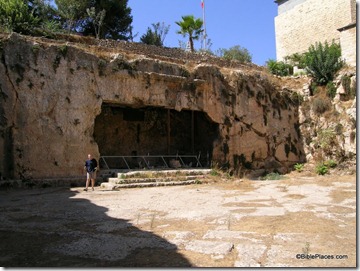The “Passages” exhibit opened on Monday and runs through October 16 of this year. It is hosted by the Oklahoma City Museum of Art. From explorepassages.com:
Passages is a 14,000-square-foot interactive, multimedia exhibition for all ages. It features some of the most exquisite and rare biblical manuscripts, printed Bibles, and historical items in the world. These cultural treasures include a Dead Sea Scroll text, ancient biblical papyri, beautifully illuminated manuscripts, early printed materials, including a portion of the Gutenberg Bible, and multiple first editions of the English Bible through the King James Version.
Visitors are immersed in a fascinating story that spans over two thousand years, winding through Judeo-Christian history, from an ancient synagogue to a modern excavation site where new discoveries are being made. Over 300 of the world’s rarest artifacts are presented in highly thematic settings which depict significant historical periods of time that are brought to life with animatronic historical figures, creative films and many interactive activities for both the young and old.
Each guest is provided with an iPod touch, at no additional charge, so they may travel through time with expert commentary on the artifacts by some of the world’s leading scholars. There is even a children’s listening track hosted by Louie the Lion.
Special effects and surprises are found throughout the exhibit so that guests can not only get a glimpse into history but also feel as if they are part of the translation and transmission of the Bible into English.
The self directed tour ends with an original film that capsulates this amazing story, shot on location throughout the world, with special narration by Wintley Phipps.
For more information, see the official website. Tickets are $26 online. The website suggests that the exhibit will be moving to the Vatican and to New York City in the future.
HT: Jack Sasson

